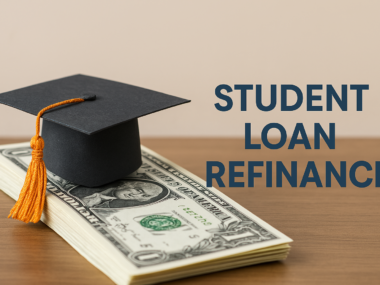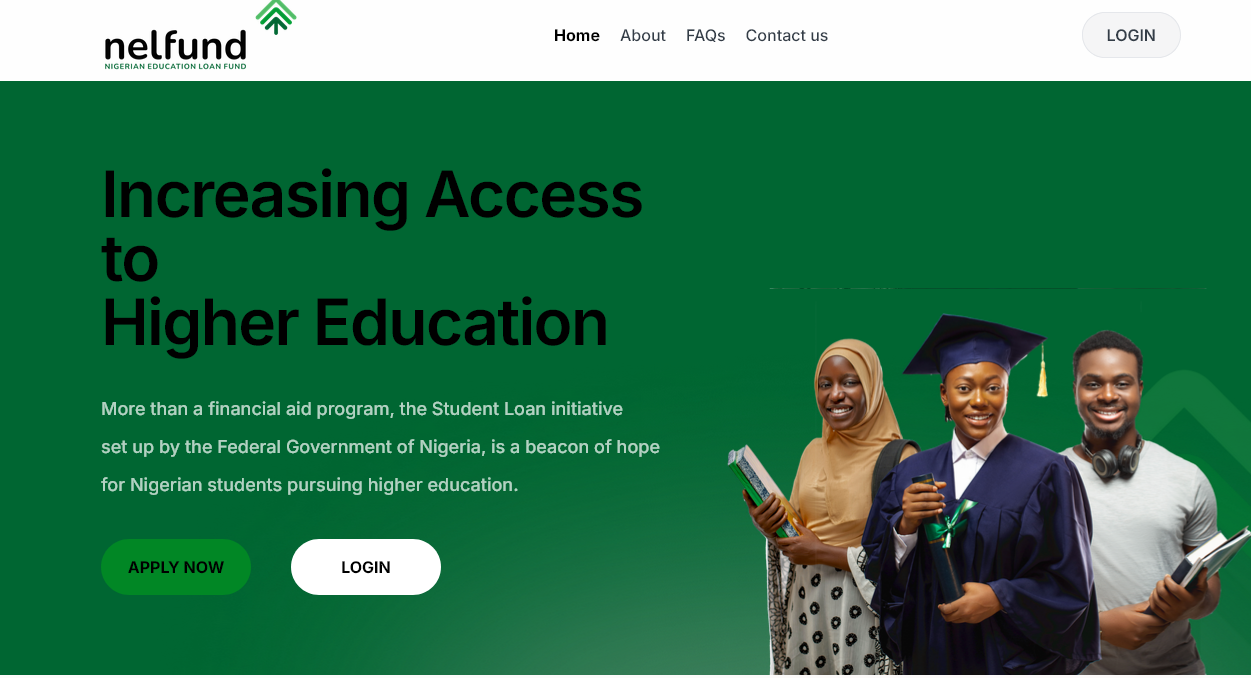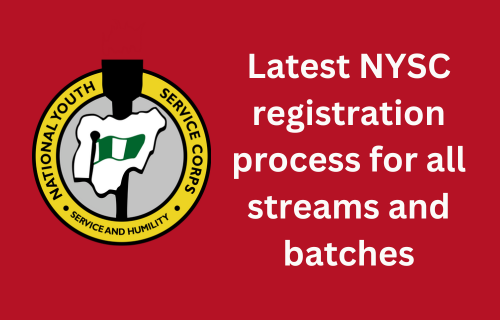In today’s digital age, the easiest and fastest way to fund your college education is to apply for student loan online. Whether you’re planning to attend a top-tier university or a community college, getting financial assistance has never been more accessible. But here’s the kicker — knowing how to apply the right way can save you from years of debt stress and also increase your chances of approval.
Now, let’s be real. College is expensive. From tuition fees to books, housing, and even transportation, the costs can pile up quickly. And while scholarships and grants are great, they don’t always cover everything. That’s where student loans come in — they bridge the gap between your financial aid and actual costs.
If you’re reading this, you probably already know that education is an investment. But getting that investment funded online, securely and smartly, requires more than just a Google search. So, grab a cup of coffee, and let’s break it all down — from the types of loans available to the step-by-step process to apply for student loan online with confidence.
Why Applying for Student Loans Online Makes Sense
Let’s face it — no one likes standing in long lines or filling out endless paper forms. Applying online is not just about convenience; it’s also about efficiency, speed, and access to more options. Here’s why more students prefer online applications:
- Faster processing times
- Access to both federal and private lenders
- Real-time updates on application status
- Electronic document uploads
- Immediate loan estimates and calculators
Most importantly, applying online gives you the power to compare different lenders from the comfort of your room. You can analyze interest rates, repayment terms, and borrower protections — all without stepping into a physical office.
Understanding the Types of Student Loans Available
Before you hit the “apply now” button, it’s important to understand the types of student loans you can apply for online. They fall into two broad categories:
1. Federal Student Loans
These are offered by the government and typically have lower interest rates and better repayment options.
- Direct Subsidized Loans: For undergraduates with financial need. The government pays the interest while you’re in school.
- Direct Unsubsidized Loans: Available to both undergraduate and graduate students. Interest begins accumulating immediately.
- Direct PLUS Loans: For graduate students or parents of dependent undergrads. Requires a credit check.
- Direct Consolidation Loans: Combine multiple federal loans into one.
2. Private Student Loans
These are offered by banks, credit unions, and online lenders. You can compare rates and terms online to find the best fit for your needs. They may require a co-signer and often depend on your credit score.
Who Can Apply for Student Loan Online?
Generally, to be eligible for a student loan, you must:
- Be a U.S. citizen or eligible non-citizen (for federal loans)
- Have a valid Social Security number
- Be enrolled at least half-time in an accredited institution
- Maintain satisfactory academic progress
- Not be in default on any existing federal loan
Private lenders may have additional requirements like:
- A good credit score or a co-signer
- Proof of enrollment
- Minimum income threshold
Step-by-Step Guide to Apply for Student Loan Online
Alright, let’s dive into the actual process. Whether you’re applying for federal or private student loans, the steps are simple — but you’ve got to be thorough.
Step 1: Fill Out the FAFSA (For Federal Loans)
FAFSA stands for Free Application for Federal Student Aid. It’s your gateway to federal student loans, grants, and even some scholarships.
- Visit https://studentaid.gov
- Create an FSA ID (your login credentials)
- Fill out the application with your financial and personal details
- Submit before your school’s priority deadline
Once submitted, your school will send a financial aid offer outlining your loan eligibility.
Step 2: Compare Private Lenders (If Needed)
Sometimes, federal loans don’t cover everything. If you need extra funds, you can apply for a private loan online. Here’s what to look for:
- Interest rate (fixed vs. variable)
- Repayment terms (10, 15, or 20 years)
- Deferment or forbearance options
- Discounts (e.g., autopay reductions)
Top private lenders with easy online applications include:
- Sallie Mae
- Discover Student Loans
- SoFi
- College Ave
- Citizens Bank
Step 3: Gather Your Documents
To apply successfully online, you’ll need to upload or provide:
- Social Security number
- Driver’s license or government ID
- School name and program details
- Income information (yours or your parents’)
- Bank account info for disbursement
Step 4: Submit the Application and Review the Terms
Before you hit “submit,” take a moment to review:
- Loan amount
- Disbursement schedule
- Interest rate
- Grace period
- Repayment start date
Once approved, the lender will send the funds directly to your school (in most cases). If there’s extra money left after tuition and fees, the school will refund it to you for living expenses.
Tips to Boost Your Chances of Loan Approval
If you want to make sure your application goes through smoothly, here are some winning tips:
- Apply early: Don’t wait till the last minute. Funds are limited.
- Maintain good credit: Especially important for private loans.
- Consider a co-signer: A parent or trusted adult can help if your credit isn’t great.
- Stay enrolled: Dropping below half-time can trigger repayment.
- Use student loan calculators: To know what you’ll owe before borrowing.
Common Mistakes to Avoid When Applying Online
Applying for student loans online is easy, but small mistakes can lead to big delays. Watch out for these:
- Entering the wrong Social Security number
- Misspelling your name (must match legal documents)
- Skipping the co-signer option (even when needed)
- Not reviewing the interest rate type (fixed vs. variable)
- Ignoring loan fees or hidden charges
Taking a few extra minutes to double-check everything can save you weeks of frustration later on.
Repayment Options to Keep in Mind
Knowing how to repay your loan is just as important as applying for it. Here are a few popular repayment plans for federal loans:
- Standard Repayment: Fixed payments over 10 years.
- Graduated Repayment: Lower payments that increase over time.
- Income-Driven Repayment (IDR): Payments based on your income and family size.
- Public Service Loan Forgiveness (PSLF): For government or nonprofit workers.
Private loans may have less flexibility, but some offer:
- Interest-only payments while in school
- Full deferment until after graduation
- Custom repayment schedules
Always ask your lender about your options before signing the dotted line.
Can International Students Apply for Student Loans Online?
Yes — but with conditions. While federal loans are only for U.S. citizens and eligible non-citizens, private lenders may offer loans to international students if they have a creditworthy U.S.-based co-signer.
Some lenders that support international students include:
- Prodigy Finance
- MPOWER Financing
- Ascent (for DACA recipients)
These platforms allow online applications and offer flexible repayment options tailored for global students.
Final Thoughts: Apply Smart, Borrow Wise
To apply for student loan online is one of the smartest moves a student can make — but only if it’s done right. With so many online platforms, flexible options, and helpful tools, there’s no need to go through school worrying about how to pay for it.
That said, always remember this golden rule: Only borrow what you need. A student loan is a long-term commitment. Whether you’re going for a degree in engineering or fine arts, your future self will thank you for making smart decisions now.
Take your time. Compare your options. Ask questions. Read the fine print. And above all, invest in your education wisely.
Frequently Asked Questions (FAQs)
1. Is it safe to apply for student loans online?
Yes, as long as you’re using secure websites (look for “https” in the URL) and reputable lenders. Always avoid sharing sensitive information on public Wi-Fi.
2. Can I apply for both federal and private loans at the same time?
Absolutely. Many students combine both to cover their full cost of attendance.
3. What credit score do I need for a private loan?
Most lenders prefer a score of 650 or higher, but it varies. Having a co-signer can improve your chances.
4. How long does it take to get the money after approval?
For federal loans, it usually takes 1–2 weeks after the school certifies your enrollment. Private loans may take 2–10 business days.
5. Can I apply for student loans mid-semester?
Yes, you can apply at any point, but earlier is better to avoid delays in tuition payments.




